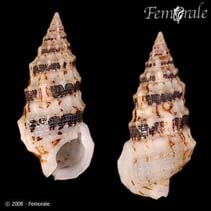Cerithium eburneum Bruguiere, 1792
Ivory cerithWarning: DOMDocument::load(): SSL operation failed with code 1. OpenSSL Error messages: error:140770FC:SSL routines:SSL23_GET_SERVER_HELLO:unknown protocol in C:\Apache24\htdocs\includes\SpeciesSummary.lib.php on line 1236
Warning: DOMDocument::load(): Failed to enable crypto in C:\Apache24\htdocs\includes\SpeciesSummary.lib.php on line 1236
Warning: DOMDocument::load(https://sealifebase.nrm.se/webservice/AquaMaps/getAMap.php?genus=Cerithium&species=eburneum): failed to open stream: operation failed in C:\Apache24\htdocs\includes\SpeciesSummary.lib.php on line 1236
Warning: DOMDocument::load(): I/O warning : failed to load external entity "https://sealifebase.nrm.se/webservice/AquaMaps/getAMap.php?genus=Cerithium&species=eburneum" in C:\Apache24\htdocs\includes\SpeciesSummary.lib.php on line 1236
Classification / Names Common names | Synonyms | CoL | ITIS | WoRMS
| Not assigned | Cerithiidae
Environment: milieu / climate zone / depth range / distribution range Ecologia
Associadas(os) a recifes; intervalo de profundidade 0 - 18 m (Ref. 83435). Tropical; 32°N - 13°S, 96°W - 35°E
Distribuição Países | Áreas FAO | Ecossistemas | Ocorrências | Introduções
Western Central Atlantic: North America.
Length at first maturity / Tamanho / Peso / Idade
Maturity: Lm ? range ? - ? cm Max length : 4.3 cm NG macho/indeterminado; (Ref. 83435)
This species is found in intertidal, subtidal and offshore coral reefs, reef lagoons, and mangrove areas, particularly on ascidian, boulder, coral, rock, rubble, sand and seagrass habitats (Ref. 83934).
Life cycle and mating behavior Maturidade | Reprodução | Desova | Ovos | Fecundidade | Larvas
Members of the order Neotaenioglossa are mostly gonochoric and broadcast spawners. Life cycle: Embryos develop into planktonic trocophore larvae and later into juvenile veligers before becoming fully grown adults.
Referência principal
Referências | Coordenador | Colaboradores
Vittor, B.A. 2001. (Ref. 8431)
Categoria na Lista Vermelha da IUCN (Ref. 130435)
Categoria CITES (Ref. 108899)
Not Evaluated
CMS (Ref. 116361)
Not Evaluated
Ameaça para o homem
Utilização humana
| FishSource |
Ferramentas
Mais informação
Fontes da internet
BHL | BOLD Systems | CISTI | DiscoverLife | FAO(Publication : search) | Fishipedia | GenBank (genoma, nucleotídeo) | GloBI | Gomexsi | Google Books | Google Scholar | Google | PubMed | Árvore da vida | Wikipedia (ir para, procurar) | Registo zoológico
Estimates based on models
Preferred temperature
(Ref. 115969): 26.1 - 28.2, mean 27.4 (based on 570 cells).
Categoria de preço
(Ref. 80766):
Unknown.



